Google leads AI advertising with machine learning integrated across ad campaigns and types. Even with manual workarounds, results tend to suffer without the help of AI-driven algorithms.
Without AI assistance for PPC bidding and creative decisions, your conversion rate will typically be lower than that of competitors who use machine learning to their advantage.
AI is changing how ad campaigns function and SERPs look with Google’s rollout of Search Generative Experience. Below are tips for mastering the art of generative AI to keep your company or PPC clients ahead of the curve.
Best practices for using generative AI
As important as AI is, human and machine-based decisions require a careful balance. Relinquishing control to AI can set your campaigns down a path of irrelevant search queries and low-quality traffic.
Succeeding with automation starts with human guidance. As a marketer, you must ensure alignment between campaigns, brand guidelines and goals when tapping into machine learning efficiencies.
Generative AI tools like ChatGPT, Gemini and Microsoft Co-Pilot are great places to get preliminary ideas for marketing campaigns, but they require guardrails.
Never use AI for the final product
Recently, I was hiring for open positions on my team. In the application process, I included the question:
- “What is the most interesting thing about you that’s not on your resume?”
No less than 20 times, my recruiting team weeded out applicants with the same response (with slight variations each time):
- “The most interesting thing about me that’s not on my resume is my passion for astrophotography. I love capturing the beauty of the night sky and sharing it with others, as it allows me to combine my love for photography and fascination with the universe.”
While using generative AI for ideas or starting points can be a great time-saver, these tools produce the same results for everyone. In advertising, your brand must stand out from your competition.
Ensure that copy, content and designs undergo a rigorous human review process to avoid appearing generic. Never use AI to replicate copyrighted content. You don’t want your brand to land on a list of AI fails.
Use detailed prompts
Receiving useful output from generative AI requires detailed prompts. AI is only as powerful as the information you feed it and prompts may take a few iterations to get right.
Watch the evolution of the prompts below to see how each improves to get closer to platform-ready ad copy.
This looks more like a landing page or email copy than a search copy:
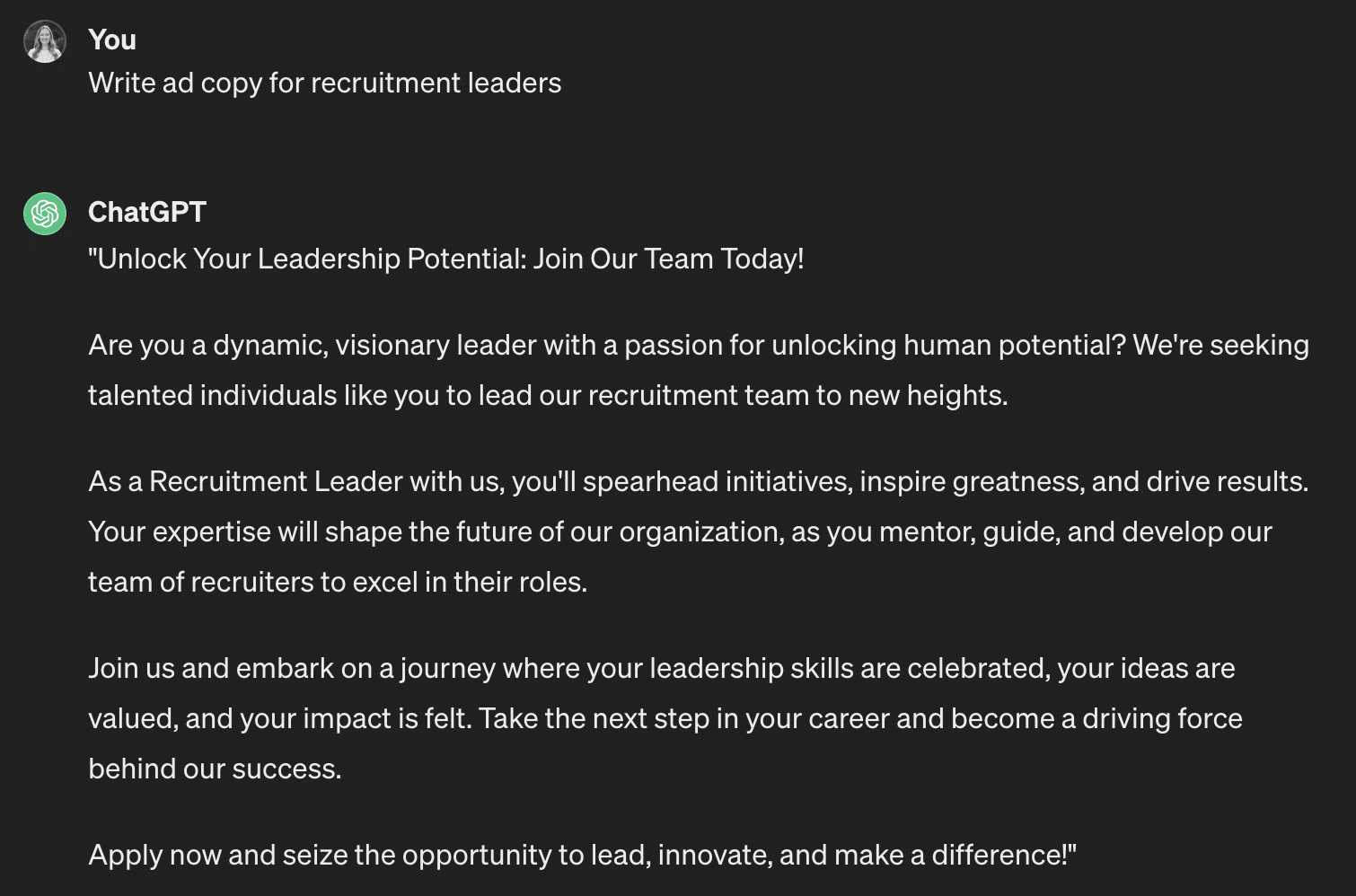
This copy is generic and the CTA doesn’t align with my campaign:
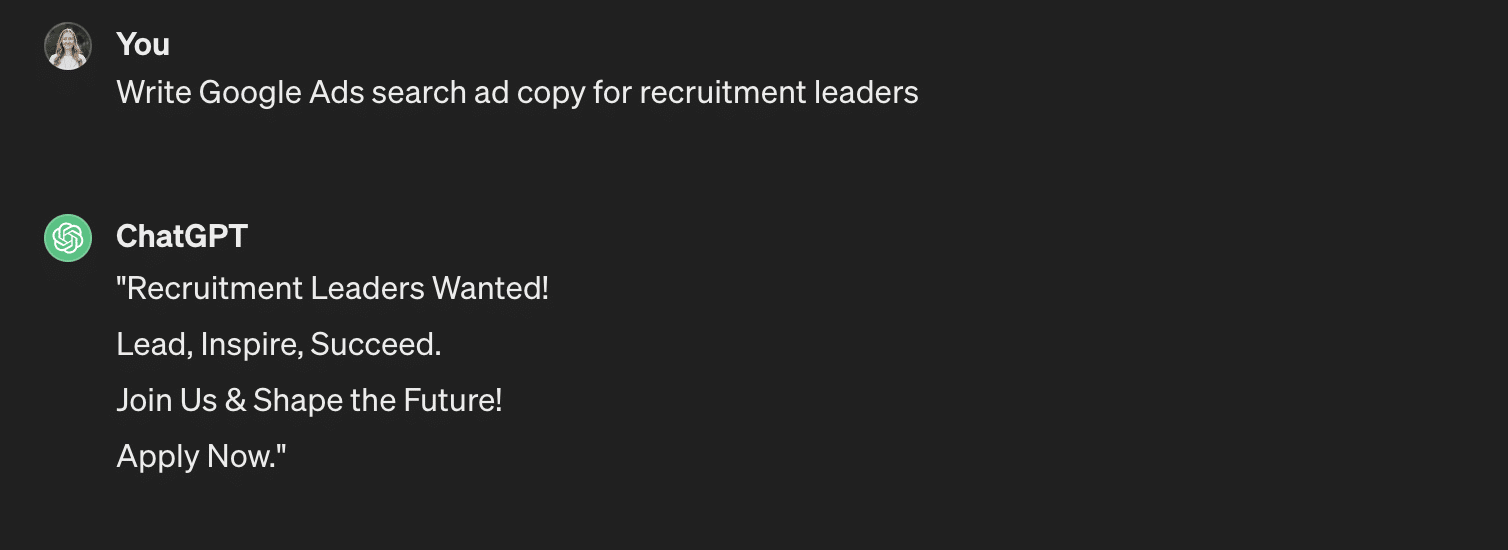
The results are improving, but I need more iterations to maximize the number of headlines and descriptions in responsive search ads to fully utilize AI potential:
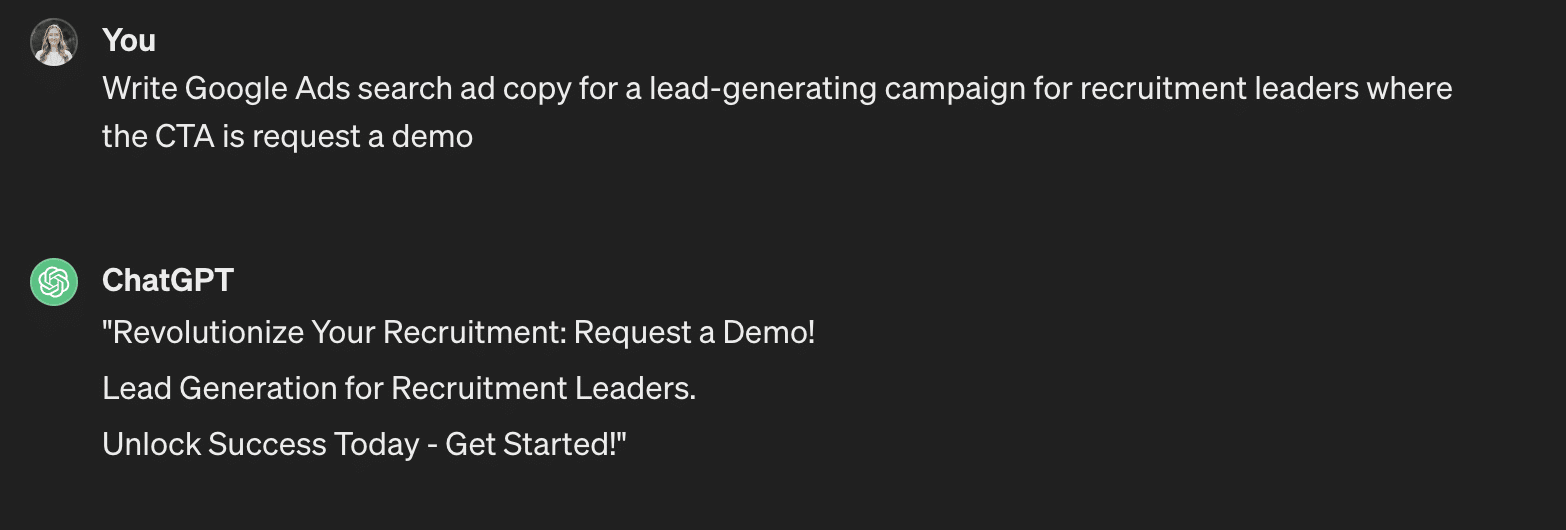
These headlines don’t meet Google’s character length requirements:
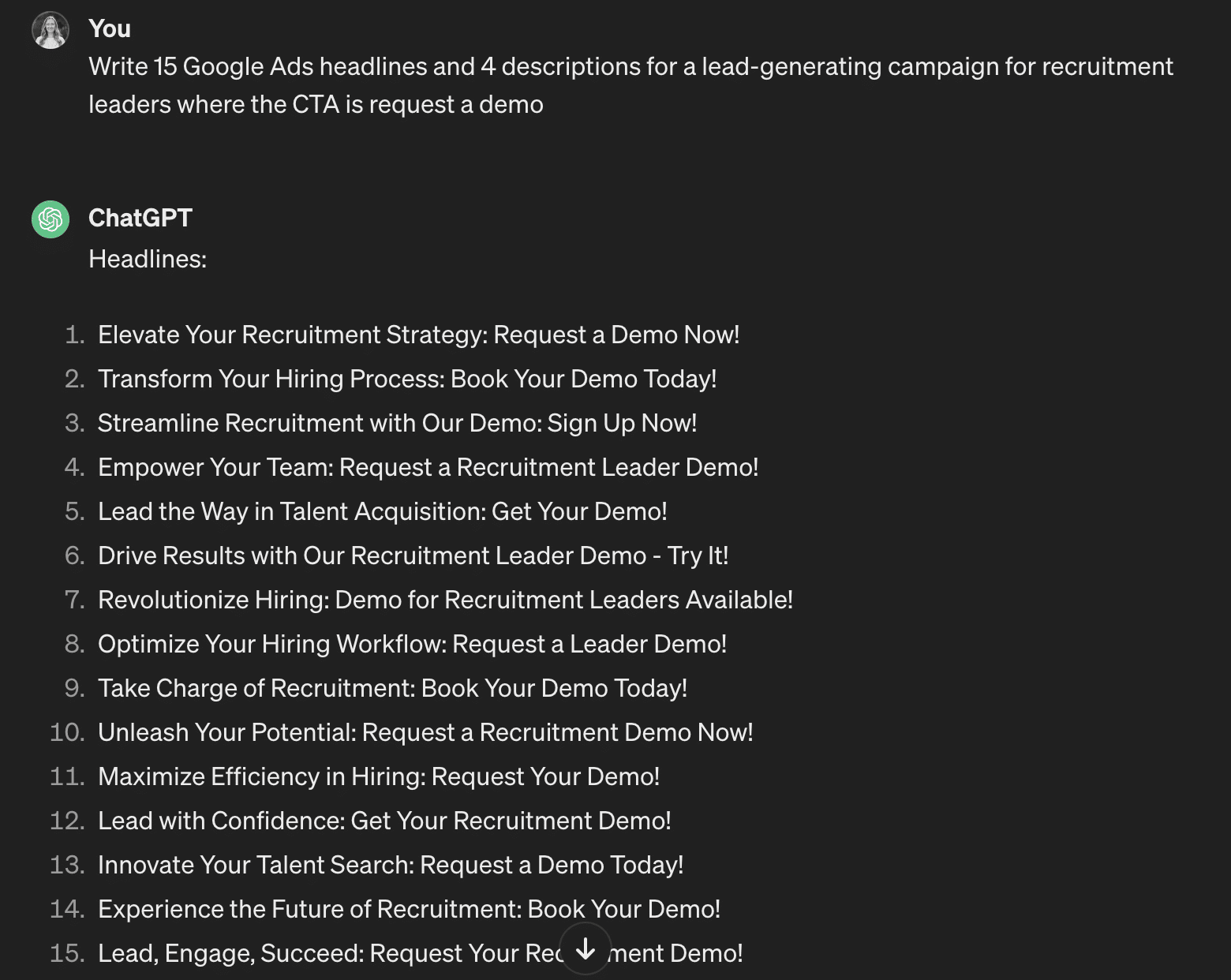
This copy is missing ad group keywords, which will lead to poor ad strength:
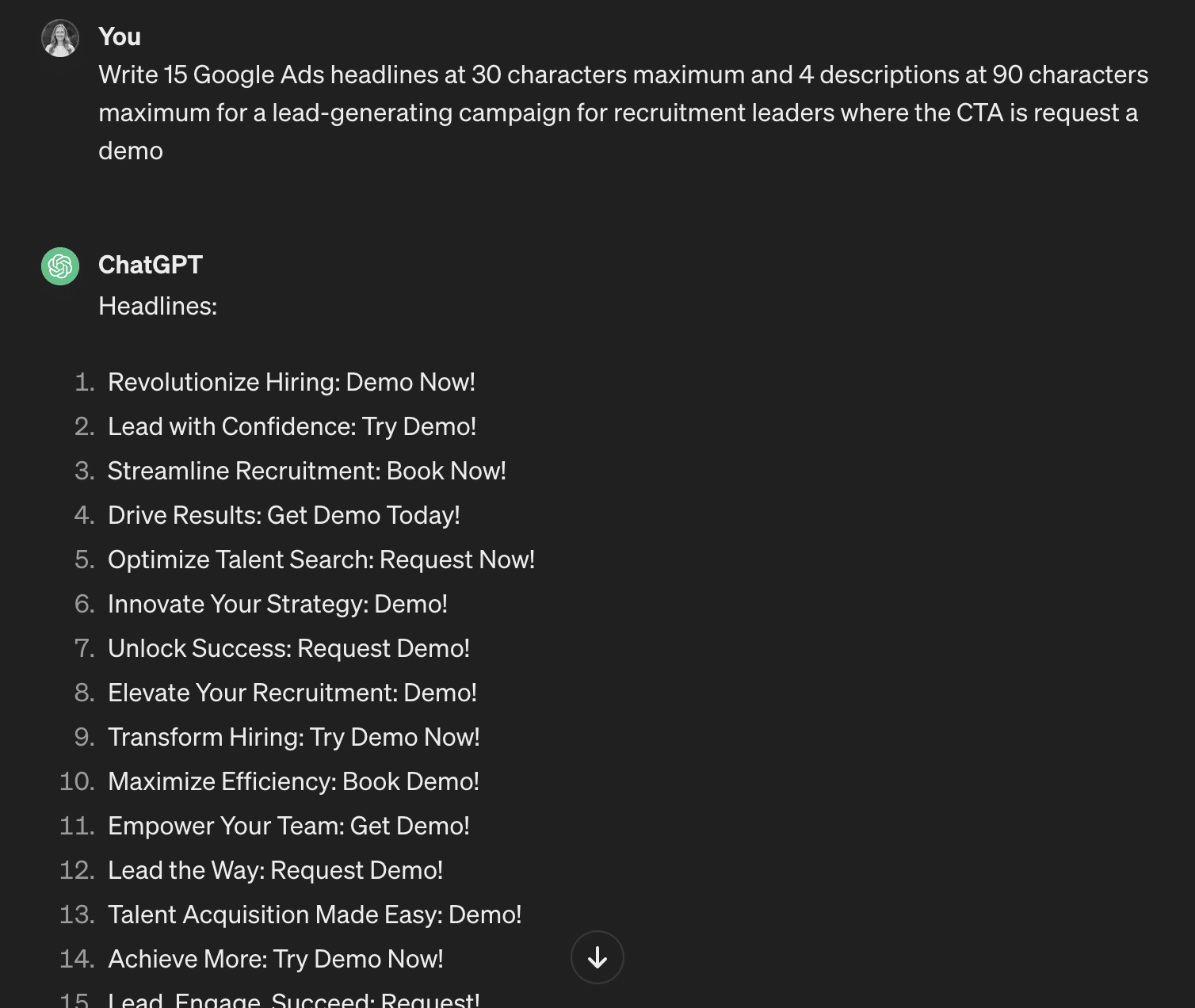
The repeated CTAs and exclamation points are redundant and unnecessary. There isn’t enough variety for the copy to relate to a user:
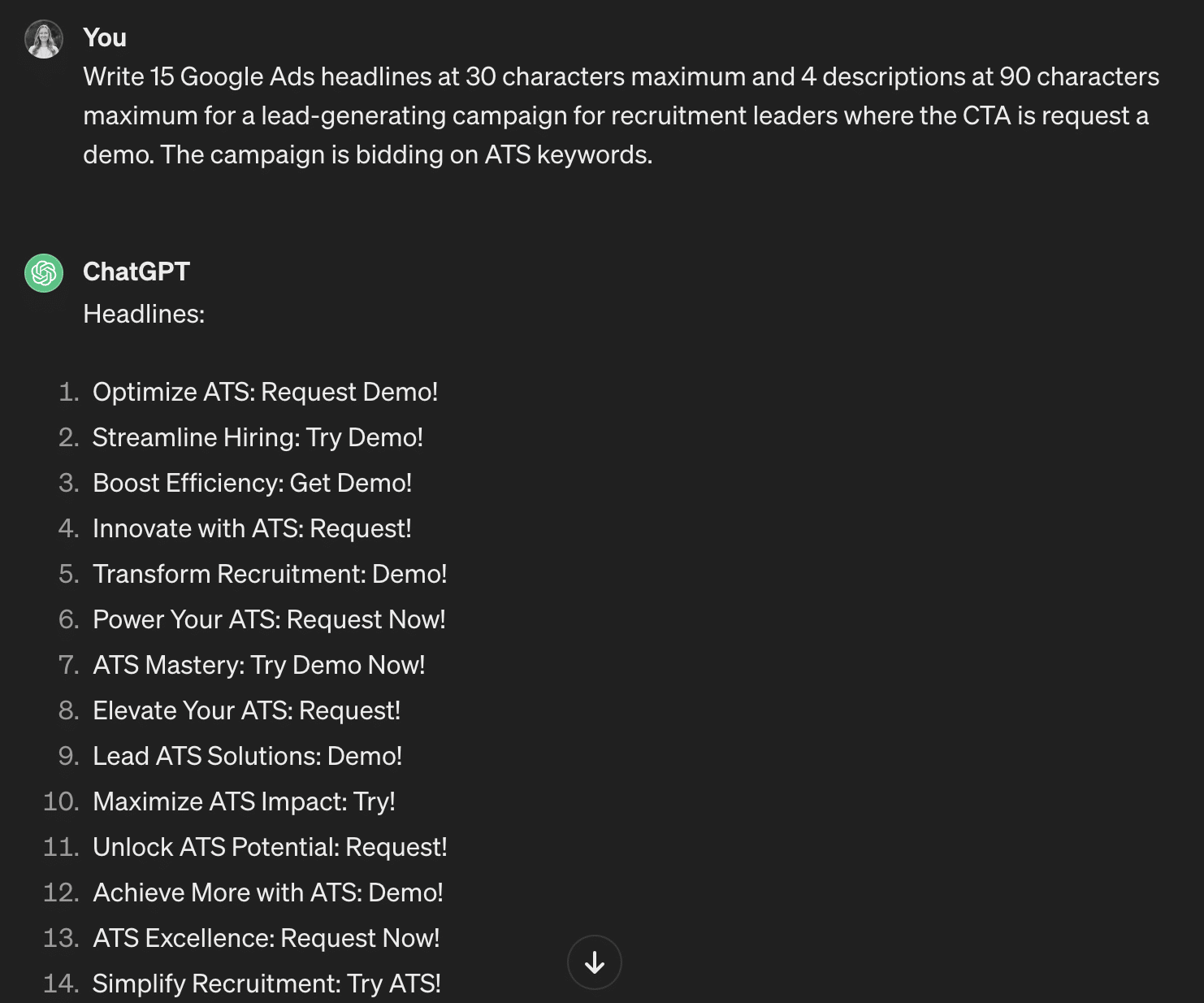
Finally, after providing the system with more details, it produces platform-ready copy.
The final step is reviewing the copy carefully and reworking as needed to include the brand name in headlines and align brand messaging before building the ads in Google Ads:
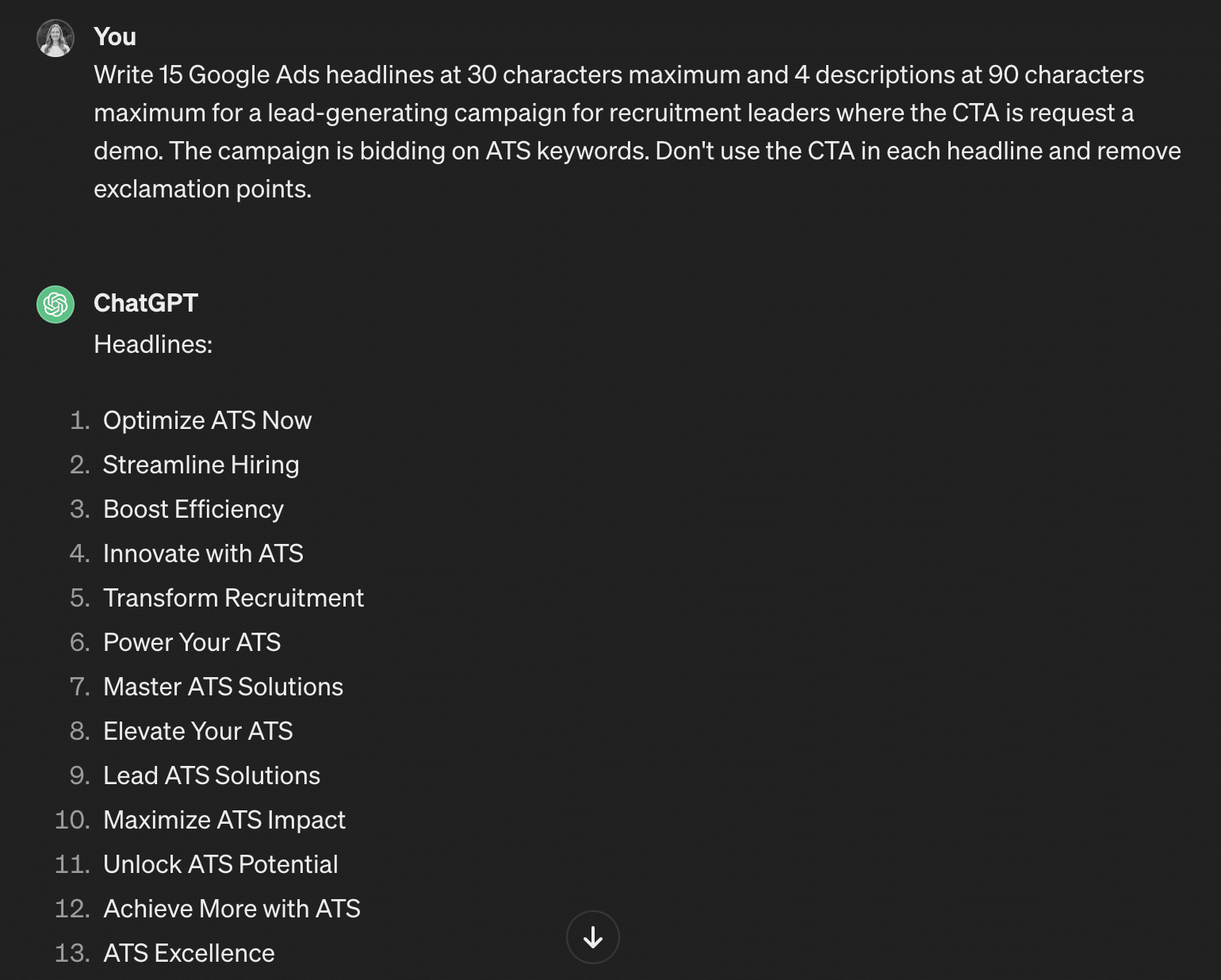
Here are some other details you might include in prompts to customize the results further:
- Link to landing page.
- Company or brand details (name, industry, etc.).
- Audience details (job titles, company size, demographic info, etc.).
- Brand tone of voice.
Dig deeper: ChatGPT for PPC marketers: 15 strategic prompts to use today
7 ways to use generative AI in search advertising
Keeping in mind the need for detailed prompts, here are seven ways to use generative AI tools in search advertising:
1. Copywriting
Take the example above for using AI to write ad copy and apply it to landing pages. This sample prompt mentions the audience, product and offer.
From here, a human can edit the copy to include more keywords and eliminate words and phrases that don’t align with brand messaging.
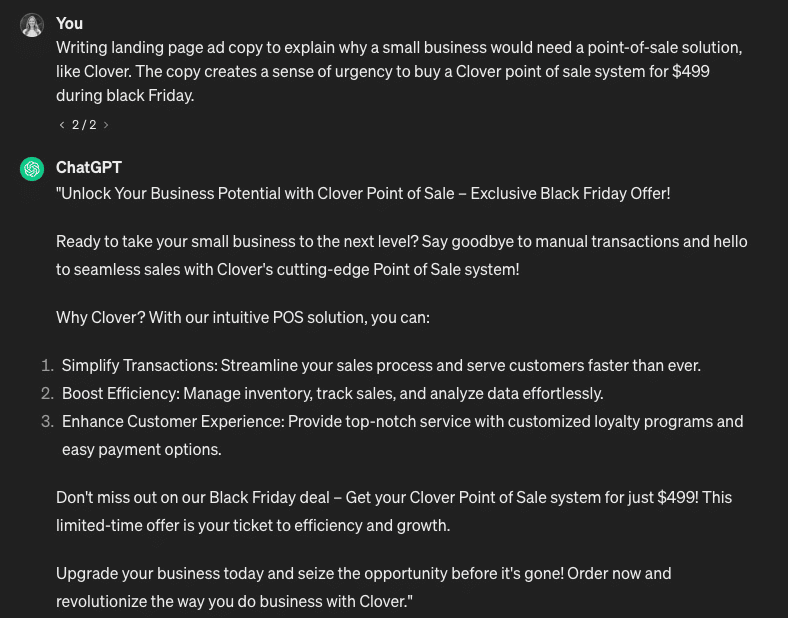
2. Keyword research
While Google Keyword Planner is a great resource for keyword research and search volume forecasting, the terms it produces may be irrelevant to your brand due to lack of context.
To account for these discrepancies, perform research in multiple ways to ensure keyword-to-audience alignment. In this example, the prompt provides the topic and a related competitor landing page.
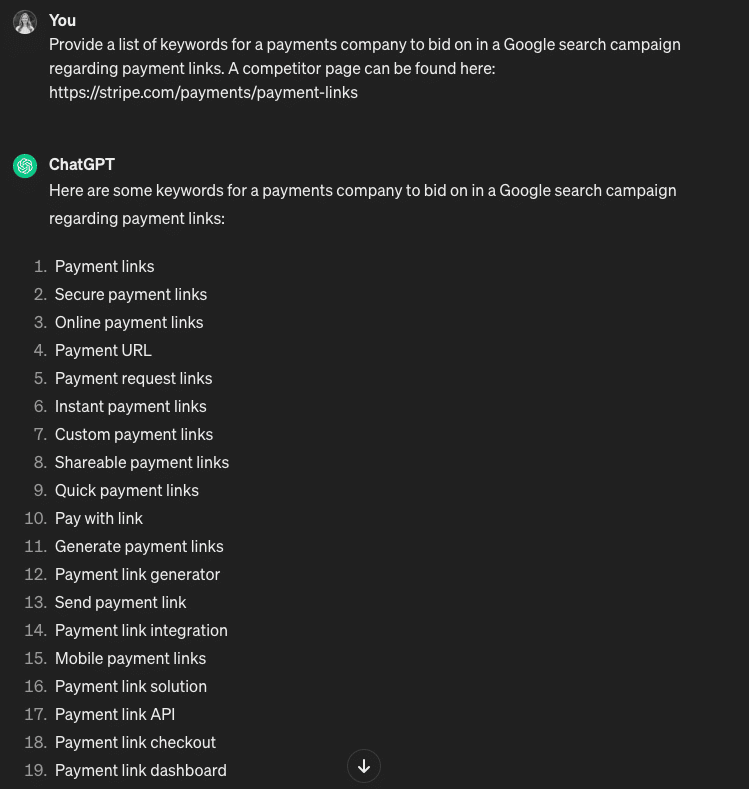
3. Building an account structure
Starting a new account from scratch or planning an account restructure? This prompt details the brand’s industry, goal and focus topics, along with additional campaigns the structure should include.
This is a good starting point to lay out campaigns and ad groups before filling in the keywords. ChatGPT gets bonus points for providing keyword ideas.
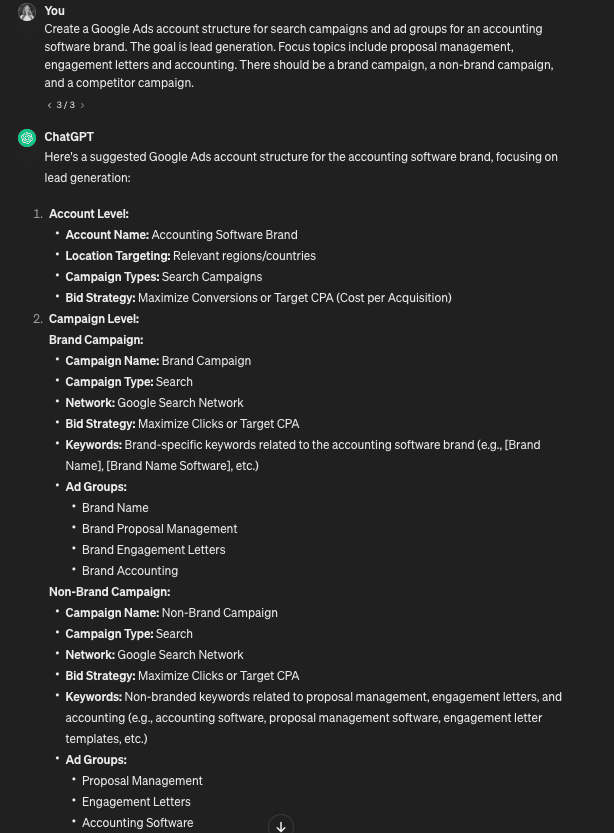
Get the daily newsletter search marketers rely on.
Business email address
Subscribe
Processing…
4. Content creation
Your content must stand out in a sea of messaging and creatives, as the competition for audience attention is higher than ever.
This prompt details audience job titles, company size and industry. It also mentions the campaign’s theme (tax season), which presents unique challenges for this audience.
Consider listing audience pain points, challenges, likes and dislikes to improve your AI tool’s output.
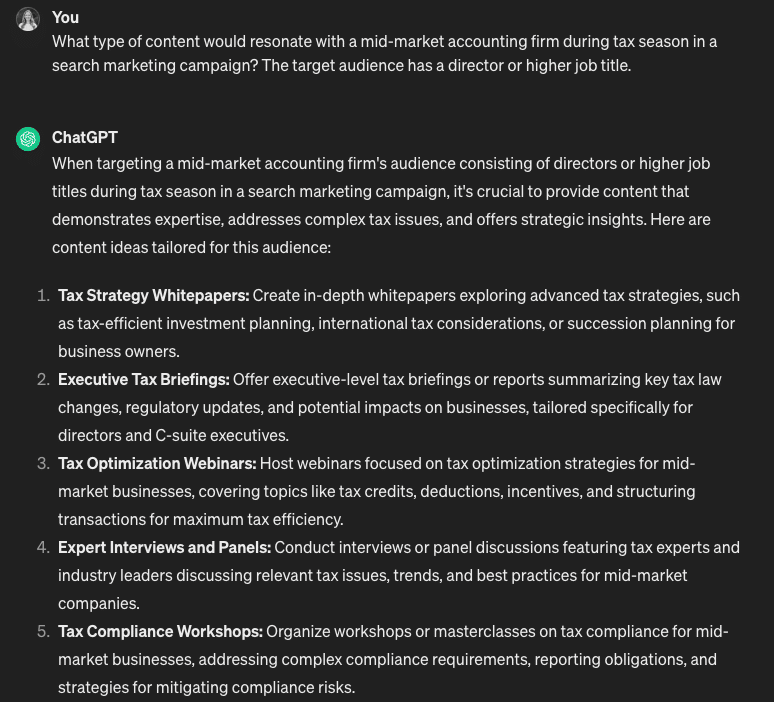
5. Language translation
Always have a human native speaker of the language review your AI tool’s translation output.
Although AI is a great time-saver in this instance, the system does not have the context for the verbiage. As a result, the translation may not align with your intended meaning.
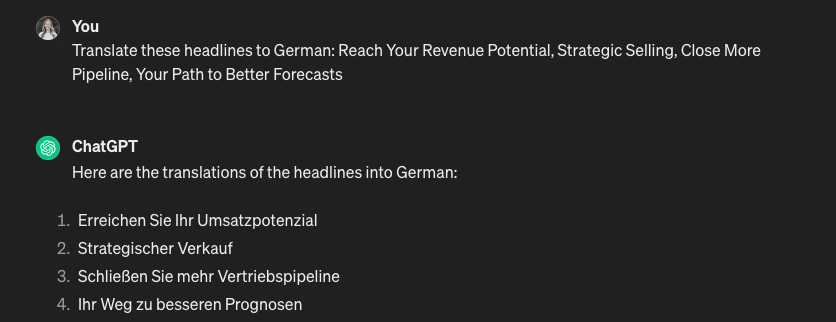
6. Audience research
Survey-based audience research tools like MRI-Simmons offer the best way to leverage real audience insights. However, generative AI can assist with getting to know your audience better.
While other tools like Sparktoro or Resonate may outline further details about these channels, AI output can create a media plan for budget allocation.
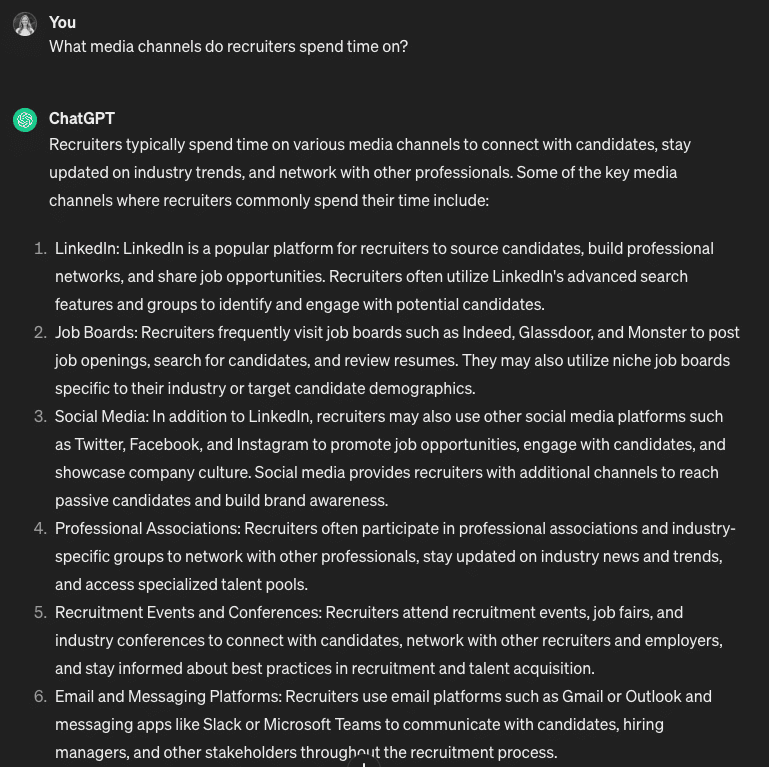
This prompt asks about pain points the target audience encounters in their job. It helps align messaging to these issues for improved relevancy and CTR.
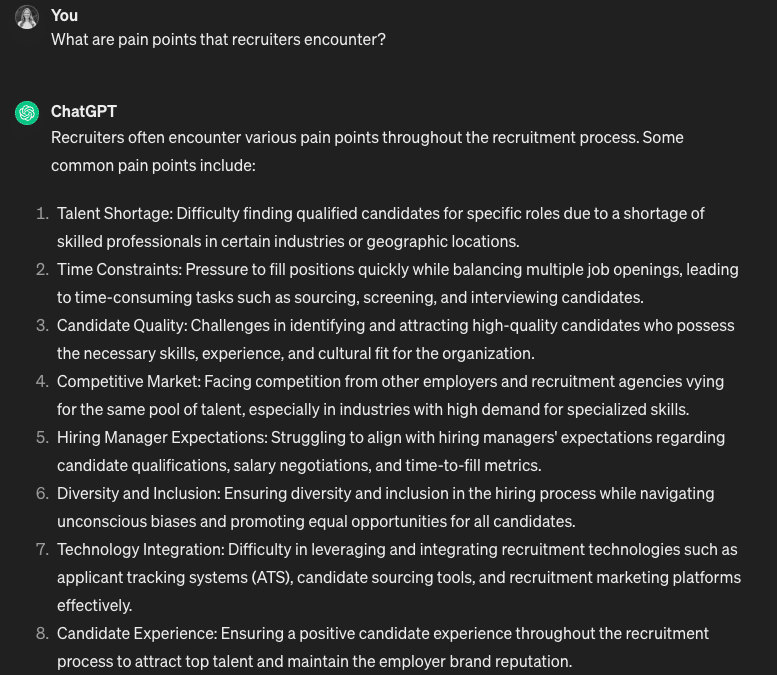
7. Display placements
Get to know your audience further with a prompt designed to find where they spend time. Then, you can focus your GDN investment on industry-specific sites.
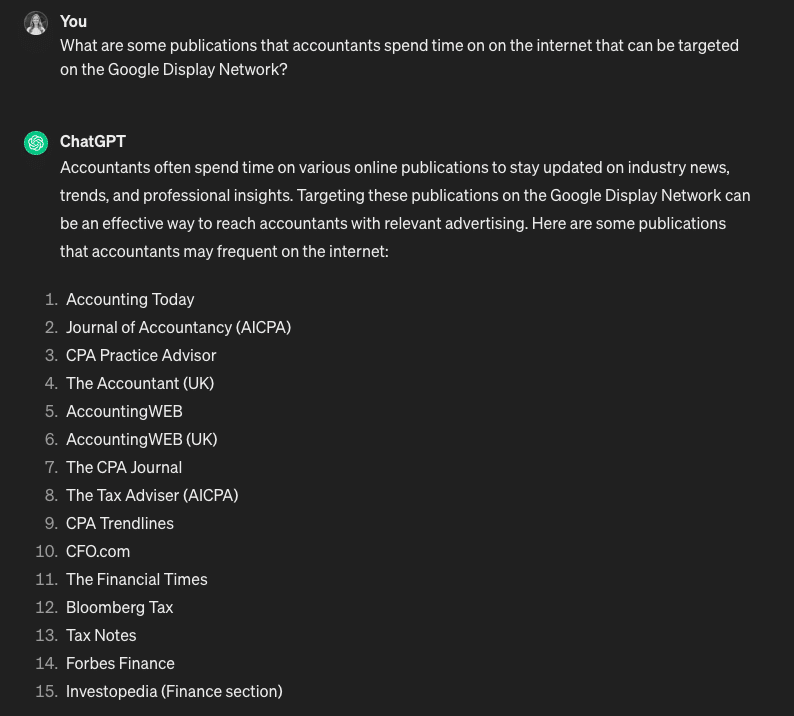
Using generative AI in PPC
Generative AI is a game-changing tool that saves time. But remember not to rely on it for the final product. Always work alongside machine learning to guide it toward better results for your brand’s performance.
